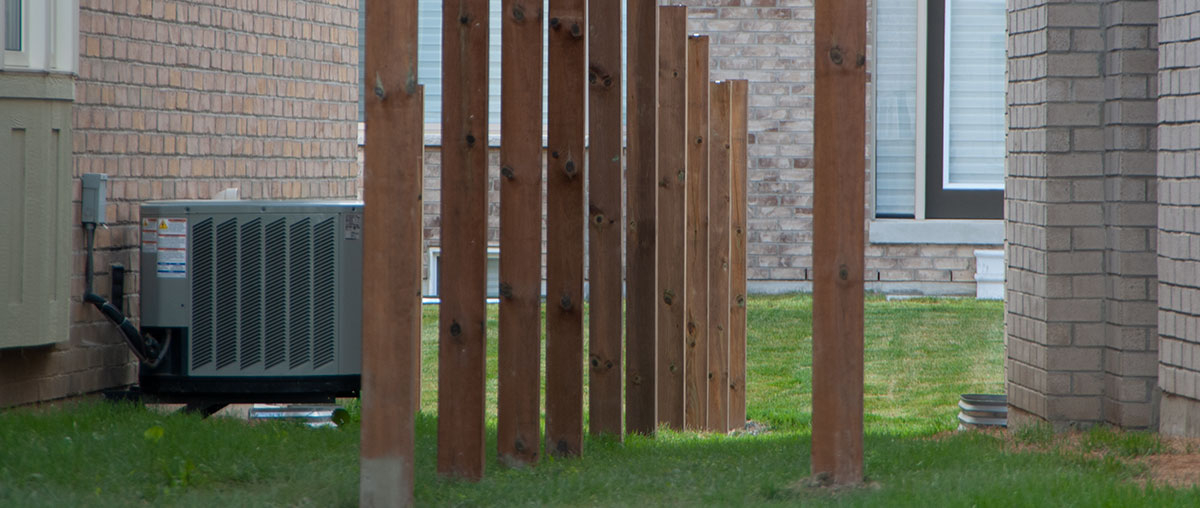Building a fence and Maintaining a Fence: Protect Your Boundaries from the Start

Building or repairing a fence may feel straightforward, but it’s closely tied to your legal property boundaries. Even a small mistake in placement can lead to disputes, delays in selling, and costly fixes, making an accurate survey plan and proper maintenance essential from day one.
Put it on the line
Ideally, a new fence between two properties should be located on the boundary, enabling each neighbour to own half of the fence and share the maintenance and replacement costs equally.
A property survey plan is necessary to accurately show the boundary location. Each neighbour can examine their own plan and, for rectangular lots, approximate their property limits by measuring the perpendicular ties to each house shown on their survey plans*.
PYB Pro Tip: Never dig or build before reviewing your survey plan. This one step could save you thousands in legal fees and neighbourhood tension.
Consider having the boundary staked
You can also engage a surveyor to mark your property boundaries and stake the fence line before digging the first post hole. This will eliminate the uncertainty of locating your fence along your boundaries, and save yourself the potential expense and hassle of being forced to move the fence because you are encroaching on your neighbour’s land.
If you wish to be the sole owner of the new fence, ensure that it is located completely on your side of the property boundary—but recognize that you will be surrendering use of a portion of your land to your neighbour. If your property (or your neighbour’s property) is sold, the new owner(s) may incorrectly assume that the fence is on the property line, which could lead to potential problems if not disclosed to them by the seller.
Pay attention to local bylaws:
Zoning by-laws will dictate the required fence height and materials, and professional fence-viewers are available to resolve disputes between adjacent landowners as long as the dispute is not related to the boundary location. Only an Ontario Land Surveyor is entitled by law to provide a boundary location.
Existing Fences:
When’s the last time you took a good look at your fence?
Maintaining your fence isn’t just about curb appeal, it’s essential to clearly defining and protecting your property’s boundaries. A properly placed, well-maintained fence helps prevent disputes, safeguards your property, and maintains strong neighbourly relationships.
If you’re looking to keep your existing fence in good shape, this guide from Protect Your Boundaries walks you through the essentials of placement, maintenance, and legal protection.
Did you know:
- Building a fence alongside or amid growing trees will likely cause damage to the fence over time, and subsequent repairs may cause renewed fence sections to deviate significantly from the true boundary line.
Assess Your Fence's Health: Catch Problems Early
Like anything exposed to the elements, fences age. But early intervention makes a big difference. Look for soft, spongy wood or discolouration, this is indicative that you fence is rotting and needs some TLC. You will also want to keep an eye out for small holes, sawdust or tunnels in your fence, these are usually a sign of insect damage.
Spotting these early gives you a chance to act before repairs become replacements.
Strong Posts, Strong Fence: Reinforcing Stability
The backbone of any fence is its posts. You can keep them tall and strong by looking out for wobbly or leaning posts. You can anchor an unstable post by adding concrete at the base of you’re your posts. Ensure that your posts have been buried below the frost line, which is about 3-4 feet in Ontario. You can also add metal brackets and braces to your post if you don’t have any already. This will provide extra support for your fence and protect your fence from hard weather or strong winds.
Winning the War on Rot: Manage Moisture
Moisture is your fence’s worst enemy, but a few simple habits can help you fight back. Keep leaves, soil, or mulch away from the base, trim surrounding vegetation regularly to allow for airflow, and apply a wood sealant or stain each year. For extra protection, add gravel around the posts to improve drainage and keep moisture from pooling.
Beat the Elements: Weatherproof Your Fence
Canadian weather can be tough on fences, but a few smart strategies can help them stand strong. Use screws instead of nails to keep boards secure over time, and space the boards slightly to let wind pass through. During the winter, clear snow buildup along the fence to reduce pressure, and make sure gates and hinges are reinforced to withstand shifting temperatures and storms.
Simple DIY Repairs: Extend the Life of Your Fence
No need to replace your entire fence for small issues—simple fixes can go a long way. Swap out broken boards with new, cut-to-size pieces, tighten loose panels using fresh screws or fence clips, and patch any small cracks with outdoor wood filler. A little regular TLC can keep your fence sturdy and looking great without the big price tag.
Final Thoughts
Poet Robert Frost famously wrote that “Good fences make for good neighbours” and we would like to add that the best fence is one that properly marks your property boundaries. Have a friendly chat with your neighbours before you build your fence. With luck, your neighbours will recognize the mutual benefit you'll both get and agree with your fence plan—and possibly even share building and repair costs with you!

